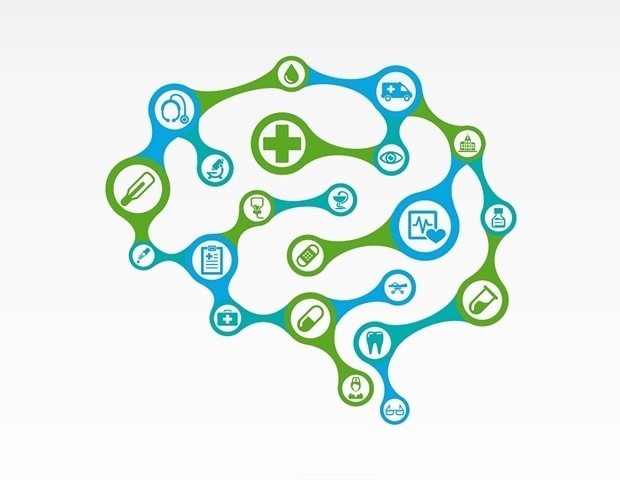There may, of course, be a time when a teenager needs professional psychological support. How will we know if that time has come? We can start by considering whether an adolescent’s feelings make sense. It’s time to worry when a teenager’s emotions don’t add up. This simple measure can, for example, help us distinguish between sadness and clinical depression or between healthy and unhealthy anxiety.

Let’s begin with the difference between sadness and clinical depression. When young people suffer losses or disappointments, we fully expect them to be unhappy. We regard a period of low mood as evidence that their emotions are in proper working order. In contrast, people who feel sad or numb without explanation may be suffering from clinical depression.
We also suspect depression if a distressing event that should cause a transient sense of sadness, such as a good friend’s moving away, leads instead to a pervasive and lasting bleakness. Put simply, you probably don’t need to be worried if your teenager is sad about something for a little while; you should be concerned if your teen is sad about everything for days at a time.
Anxiety is an emotion that can be healthy
It’s the same with anxiety. You may not have expected to see anxiety just mentioned as an emotion that can be healthy. In recent years, anxiety, along with every other unpleasant emotion, has gotten an unnecessarily bad rap. In fact, psychologists have long understood anxiety to be a healthy, protective alarm that alerts us to threats. These threats can be on the outside, such as when a teenager realizes that the road he’s driving on has become icy, or on the inside, such as when a teenager realizes that he’s a week behind on studying for an upcoming test.
Feeling anxious on icy roads or when procrastinating can focus a teen’s attention usefully, motivating him to drive with care or to hit the books. Back to our simple measure, clinicians consider anxiety to be unhealthy only when it doesn’t make sense, either because it’s ringing the alarm when there’s nothing to worry about, or the scale of the anxiety is way out of proportion to the threat.
In other words, we wouldn’t want a person to feel anxious when driving under safe conditions. And though a teen should be nervous if he’s not prepared for a test, if his anxiety caused panic attacks, it would be out of proportion. Anxiety that fits the situation is one thing, anxiety that doesn’t is another.
Next, we should also pay attention to whether teenagers are managing their feelings in adaptive ways. In the case of the girl who feels down because a good friend has moved away, her sad feelings are not themselves grounds for concern. But it’s time to worry if she deals with her misery by turning to harmful strategies: getting high, becoming excessively short-tempered with her parents, or pushing other friends away.
For sure, even the most psychologically sturdy adolescents do not always handle their feelings well. But when teens make a habit of seeking emotional relief in ways that are risky or costly, it’s time to be concerned.
What are “unhealthy psychological defenses”?
We should also notice when teenagers rely on unhealthy psychological defenses to manage painful feelings. As we know, the unhealthy defenses buffer uncomfortable emotions by compromising reality, such as when a person insists that a painful event never occurred (denial), has no memory of something awful that really did happen (repression), or feels entirely disconnected from her or his own thoughts, feelings, or body (dissociation).
Defenses that distort reality are most likely to arise from terrible or traumatizing experiences and strongly suggest the need for psychological support. Indeed, some parents become aware that their teenager may have suffered a trauma only when the teen begins to rely on unhealthy defenses to try to keep the psychological aftermath of the trauma at bay.
As much as it can be helpful to have guidelines for when to worry about your adolescent’s emotional health, you don’t have to figure this out on your own. If you’re wondering whether your teenager needs professional psychological support—and especially if your teen has feelings that don’t add up, is handling emotions poorly, or is relying on unhealthy defenses—reach out to a mental health professional for advice on next steps.
How to handle teens who mention suicidal feelings?
What about teenagers who mention feeling suicidal or who talk about wanting to hurt themselves? Such comments should always be taken seriously. As a first step, you should ask if the teen would ever act on these words, as I coached Lucia’s father to do. If you get an answer that does not leave you completely reassured, seek help right away from a health professional, such as the teen’s pediatrician, or—if you are concerned about your teen’s immediate safety—take your teenager to an emergency room.
What if teens aren’t mentioning suicide, but adults have reason to worry that it might be on their minds? Again, ask. Say, “I understand that this question may seem a little bit out of the blue, but given how upset you are, I feel that I need to ask it—have you had any thoughts about hurting yourself or ending your life?” Adults sometimes avoid the topic of suicide because they worry that bringing it up will cause teenagers to feel even more uneasy. To the contrary, research shows that asking nonsuicidal teens about suicide does not leave them feeling worse, but for teens who are feeling suicidal, it relieves distress.
Experts have long studied the factors that put teens at higher risk for taking their own lives and for years have been working from the understanding that the prime risk factors to look for are depression, anxiety, substance use, or other psychiatric disorders. These are indeed major risk factors for adolescent suicide, but we recently learned that they mostly apply to white adolescents. Unfortunately, the profession of psychology has a long history of taking a one-size-fits-all approach to its research findings. Once our results are in, we work from the assumption that they apply equally to individuals from a wide range of racial, ethnic, and socioeconomic backgrounds. And that’s not always correct.
One stark example relates to Black adolescents and suicide. While the suicide rate among teenagers has, alarmingly, been on the rise in recent decades, the latest data reveal that the most dramatic upticks have occurred among Black teens. When experts turned to the research literature to make sense of this trend, they came up all but empty-handed, because until recently we have not studied whether Black adolescents face risk factors of their own. So when the suicide rate among Black teens started to stand out from the general trend, we had no idea why, or what to do about it.
Thankfully, as a result of research fast-tracked by a congressional emergency caucus and the National Institute of Mental Health, the picture has started to come into focus. Early findings indicate that much of what we know about suicide in white teenagers does not extend to Black adolescents. Compared to their white counterparts, Black teens who died by suicide were less likely to have a known mental health problem or to have shared their suicidal thoughts or plans. They were, however, more likely to have recently experienced a crisis, a family problem, or an argument, and were also more likely to have made past suicide attempts.
With more representative data, we’re better equipped to know what to look for and when to worry about the safety of Black youth. This emerging information also provides further evidence of the systemic racial disparities in health care. The fact that Black teens were less likely than white teens to have known mental health problems yet were more likely to have made past suicide attempts highlights the fact that, on the whole, Black teenagers and their families are severely underserved by mental health services.
The emotional lives of teenagers cannot be divorced from the social forces that shape their world. And the social forces that shape their world are determined by the different identities that teens carry. Some young people come of age while contending constantly with racism, discrimination, and marginalization, which weigh upon not only their emotional lives but also their aspirations, physical safety, and access to care. As we consider how young people navigate and come to terms with their emotions, we must also acknowledge this reality.
So far, what have we established about the emotional lives of our teenagers? First, their emotions provide valuable information and have a place at the decision-making table. Second, it is not our goal to protect adolescents from unwanted emotions, because those emotions play an important role in maturation. And third, adults shouldn’t mistake the extreme emotional intensity that is natural to adolescence for psychological fragility. Putting it all together, we want our teenagers to appreciate the input provided by their feelings, to know that uncomfortable experiences will help them grow, and to learn how to navigate their emotions effectively.
With these ideas as our mainstays, let’s go on to discuss the forces that shape psychological development in young people, and how we can support our teenagers as they build healthy, enriching emotional lives that will carry them into adulthood. The first stop? One of the most powerful forces shaping adolescents’ emotional lives: gender.
Enter to win a copy of The Emotional Lives of Teenagers here (deadline 2/22/23)
Excerpted from The Emotional Lives of Teenagers: Raising Connected, Capable, and Compassionate Adolescents by Lisa Damour, Ph.D. Copyright © 2023 by Lisa Damour. Excerpted by permission of Ballantine Books, an imprint of Penguin Random House LLC. All rights reserved. No part of this excerpt may be reproduced or reprinted without permission in writing from the publisher.
More Great Reading:
Dr Lisa Damour: How to Help Your Teen Say No to Risky Behavior
Helping Teens Manage Stress and Anxiety: Dr. Lisa Damour

 PARENTING TIPS
PARENTING TIPS







 PREGNANCY
PREGNANCY








 BABY CARE
BABY CARE








 TODDLERS
TODDLERS








 TEENS
TEENS








 HEALTH CARE
HEALTH CARE







 ACTIVITIES & CRAFTS
ACTIVITIES & CRAFTS








 CONTACT
CONTACT ABOUT
ABOUT














